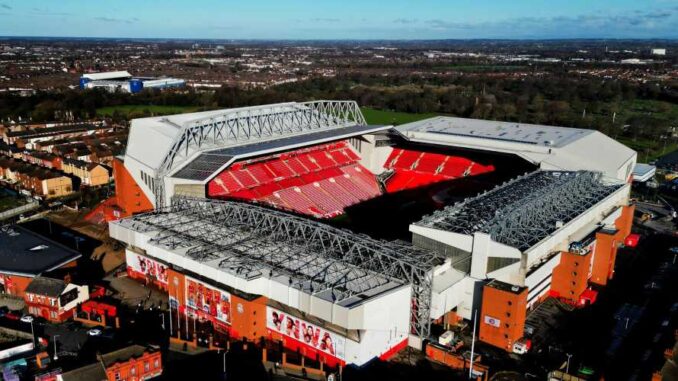
Liverpool’s home stadium can currently hold 61,276 spectators after the Anfield Road Stand renovation was finished in early 2024. Following their 2010 acquisition of the team, Fenway Sports Group (FSG) oversaw a two-phase redevelopment project that resulted in the addition of 16,000 seats to the Main Stand and Anfield Road Stand.
There are now more hospitality sections spread throughout the stadium as a result of these large improvements, yet some fans are lamenting the effect these areas have had on the renowned Anfield atmosphere.
Anfield is now the fourth-largest Premier League stadium, behind the Tottenham Hotspur Stadium, the London Stadium, and Old Trafford. The expansion of the Anfield Road Stand lasted eight years and cost the club around £80 million.
If John Henry and Billy Hogan, CEO, want to invest in further redevelopment works in the coming years, then there might be some stumbling blocks. ‘This is Anfield’ has produced an in-depth explainer video on their YouTube channel concerning why Anfield cannot be expanded further. We have outlined the major reasons why further expansion at Anfield might be difficult for Liverpool.
Transport Infrastructure Issues

Infrastructure plans were required for both of the applications for the Main Stand and the Anfield Road Stand expansions. For any further redevelopment of the stadium, Liverpool’s hierarchy would have to significantly invest in and improve the current transport options in and around the stadium. Getting away from the stadium is not easy for the majority of Liverpool supporters, as the main train station, Liverpool Lime Street, is located two miles away from Anfield. As well as this, the closest public transport stations, Sandhills and Kirkdale, are just under a 30-minute walk to the ground.
With the current transport infrastructure, it would be unlikely that any future development project would be approved. To resolve these issues, a new tram or railway line has been discussed. Ultimately, though, this would come down to whether the Liverpool City Region thought it was financially viable and necessary for the community in the long term.

Another issue with pursuing a further expansion project at Anfield is the potential complications with residents on Skerries Road. Rows of houses on this road are located behind the Sir Kenny Dalglish Stand. For the Main Stand redevelopment, three rows of houses were knocked down, but they were “largely disused and derelict,” according to This is Anfield. The houses on Skerries Road are occupied by residents, meaning demolishing rows of houses would not be a possibility. Properties behind the stand would also have ‘Rights to Light’, meaning any planned redevelopment would infringe on that. A right to light is outlined as the following on the Law Commission
“A “right to light” is an easement that gives a landowner the right to receive light through defined apertures in buildings on his or her land. The owner of land that is burdened by the right cannot substantially interfere with it – for example by erecting a building in a way that blocks the light – without the consent of the benefiting owner.”
Kop Expansion Unlikely

Located directly behind the Kop is Walton Breck Road, a major A road that is used regularly on matchdays and non-matchdays. Previous suggestions that the club could build additional seats over the road have been dismissed as it would require knocking down buildings, including the church.
As a result, filling in the corners of the Kop has also been put forward as a way to increase the stand’s capacity. There are stanchions in the corners on both sides of the famous stand, though, which hold up the Kop and the Main Stand. Removing them would require a complete restructuring of both stands, which isn’t a feasible option for the club, especially after the Main Stand was recently redeveloped as part of the two-phase expansion project.
Read more news on
sportchannel.co.uk
Leave a Reply